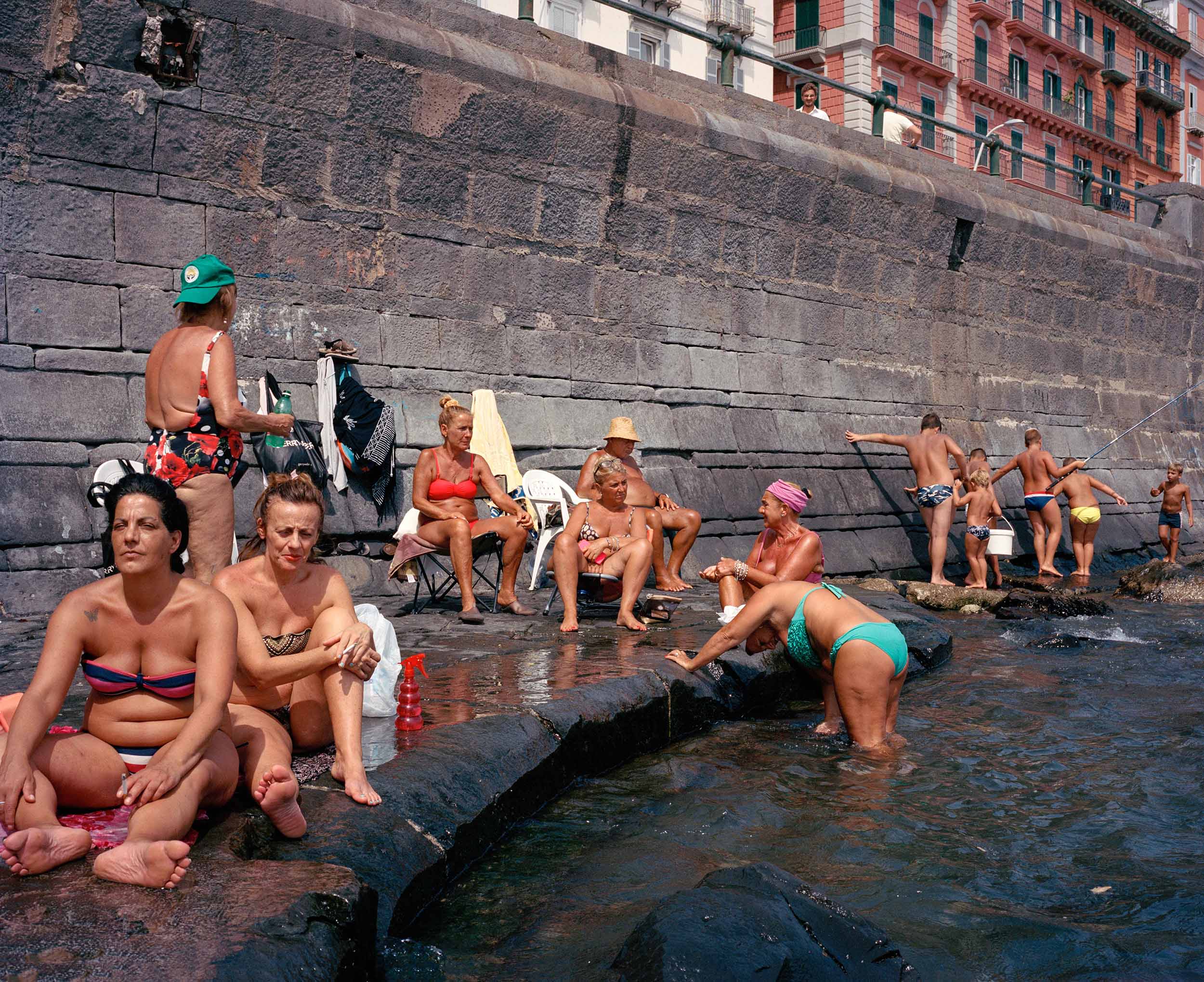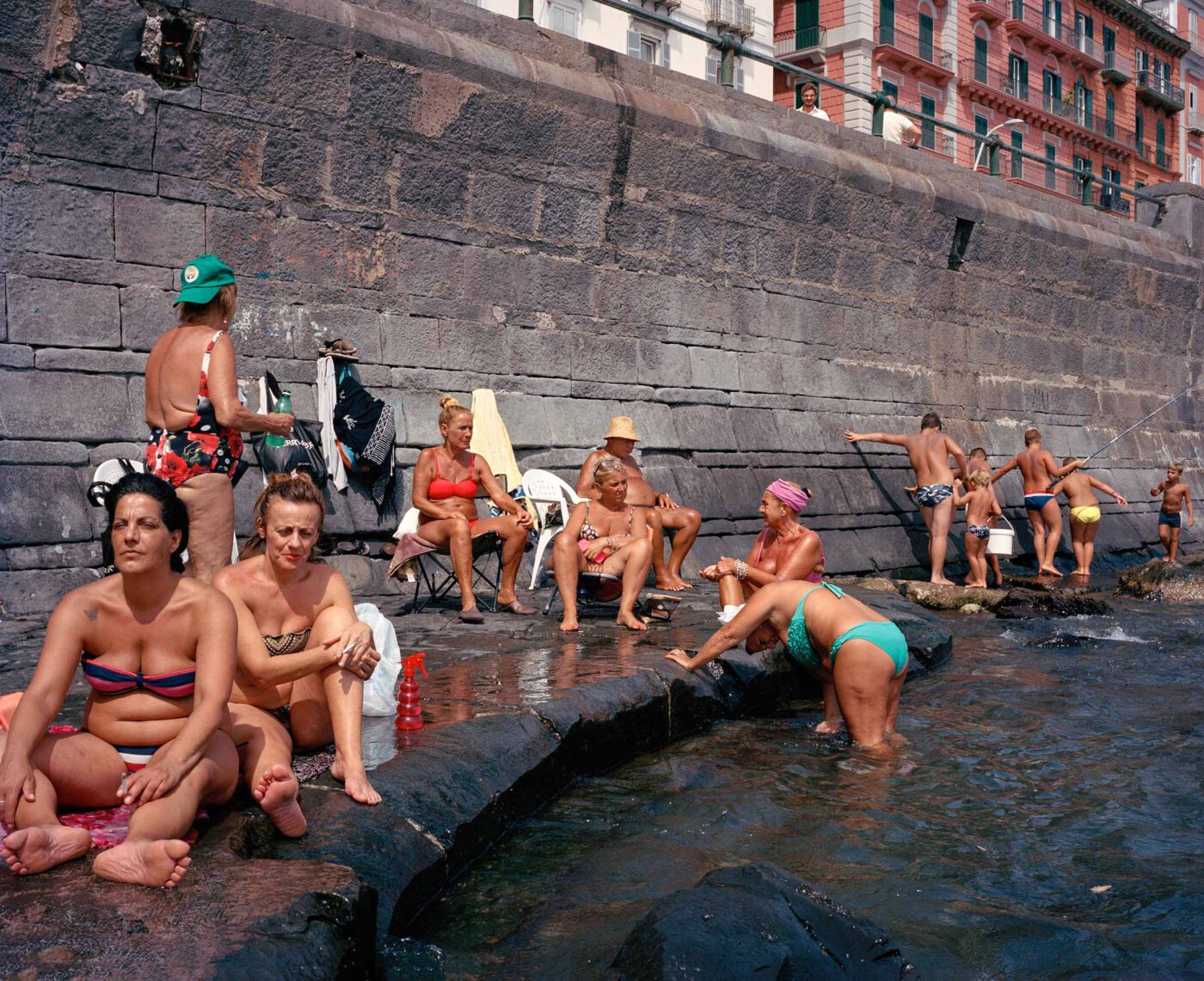A city of excessive potential and catastrophe, Naples bears various scars on its skin: volcanic eruptions, cholera, rubbish emergencies, earthquakes, lahars, but also revolutions, battles, urban redevelopment and unparalleled cultural riches. In such a city, what’s a local to do? And in an economic context where unemployment is almost 28% (data from 2005), what can a Neapolitan do for a living? There are only two options: to leave (usually to the north) or to adapt. The latter of which Neapolitans call arrangiarsi–to get by. It’s a skill that Neapolitans have mastered–thanks in part to historical and cultural events, but also to a common feeling that can be traced to the very DNA of the city.
This ability to bite life rather than suffer it, which has almost become a real lifestyle, has allowed fantastic trades to flourish in the city (and beyond), described even by famous writers such as Benedetto Croce (Naples is “a paradise inhabited by devils”), Salvatore Di Giacomo and Matilde Serao (those from Naples have “rich Neapolitan blood that heats in hatred, burns in love and consumes in dreams”). There is also a 1954 movie by Luigi Zampa, starring an amazing Alberto Sordi, entitled L’arte di arrangiarsi–a comic denunciation of the typical turncoat, opportunist and cheating character. The personal philosophy of the protagonist can be summed up through a very high moral imperative: survival. This way of life fits the Neapolitan people very well–in both positive and negative terms.
The “scugnizzi” (groups of young boys who overran the streets playing, stealing and often starving) of the last century were excellent in the arte di arrangiarsi: take, for example, those who devoted themselves to shining the shoes of the gentlemen who strolled along Via Toledo. They took the name of sciuscià, mispronouncing (as often happens in Neapolitan dialect) the English word “shoe shine”. Or they took charge of deliveries of fruit and vegetables or milk and bread, carrying them to the homes of the elderly (a job that still exists and persists today, especially around butcher shops and neighborhood grocery stores). They would put everything on their bikes and take the stairs in a hurry. With this door-to-door delivery, they earned their tips. The counterpart to these here-and-there jobs was to end up on the street, as films such as Umberto Lenzi’s Napoli violenta (1976) and Claudio Giovannesi’s La paranza dei bambini (2019) testify better than me. Though of course, these characters also have their own ways of arrangiarsi.
But knowing how to adapt has never been a modus vivendi just for Neapolitan children. A common practice all over Italy, especially in the second post-war period, was that of the “mammazezzelle”– more or less young women who took charge of babies not their own to breast-feed them (the babies became known as “milk brothers and sisters”). The women of Naples took this practice to another level and exploited the vulnerability of lower-income families with newborns. They would also offer their services, at a cost, to “fix” supposed physical abnormalities in the babies such as lumps, wrinkles or odd head shapes. In reality, they did nothing to the infants and simply kept them for a couple of days, breastfeeding the babies before returning them to their families healthy, clean and rosy. This is how they earned the nickname “aggiustabambini” (baby-fixers).

Photography by Gina Spinelli
And what about the famous “capère”? A century ago, it was an all-female profession that was quite well regarded, even by the rich and noble families: the ancestors of hairdressers, capère did not just limit themselves to styling hair, but brought gossip into the homes of their clients. They knew everything about everyone and had no intention of hiding it: replacing newspapers and gossip magazines, those who were better informed of course had more customers. The writer Raffaele Mastriani described them as follows: “She always dresses very neatly and also with some refinement for her status; but especially her head should be a kind of show, of champion and model.”
If, on the other hand, someone needed a little extra pathos at a funeral, all they had to do was pay a “chiagnazzara” (cryer): usually a professional actress, the woman would mourn the dead with incredible transport, thus giving funeral goers the impression they were witnessing the burial of a saint.
And I could spend hours and hours here describing how many of the Neapolitan street foods came about thanks to women’s art of arrangiarsi: from zendraglie (offal) to fried pizza (the movie L’oro di Napoli with Sofia Loren is enlightening in this case, as frying food in boiling oil was often the job of the pizza maker’s wife); from pizza on credit (paid in installments) to pizza “oggi a otto” (“I’ll eat it today and pay for it in eight days”–word spread quickly if you didn’t pay); from zeppole and panzarotti to the favorite cuoppi di paranza (little fishes–mullets, whitebaits, etc.–fried and served in a cone-shaped wrapper). These foods all came from the Neapolitan scrappiness–no leftovers unused, no waste.
Men had their own roles in the art of arrangiarsi: for one, the “pazzariello” (crazy man), a figure that still survives in the streets of the city today. In the aforementioned movie L’oro di Napoli, this character was played by Totò, who, like the real life ones, was a prankster dressed in vibrant colors, often accompanied by a small orchestra to entertain passers-by. Basically, the pazzarielli were some of the first theatrical street performers.
How could we not mention another expert of the streets and alleys? The so-called “lutammaro” (the word goes back to the root “lota”, i.e. mud, dirt), who performed an indispensable male trade that involved collecting excrement, mud, stones and all kinds of dirt from the streets, and then selling it as fertilizer.
The “acquaiolo” (water seller) on the other hand, later owner of one or more “banca ‘e l’acqua’” (literally “the water bank”, though in a broader sense, a stand of fresh drinks) took the great opportunity to retrieve drinking water from natural sources and then resell it in the form of a simple drink or ice, a luxury in the 18th century. They were often heard calling with the recurring phrase: “Acquaiò, acquaiò, how is the water? Is the water fresh?”
Other trades that proved that the Neapolitan was a guru in the art of arrangiarsi: the “sapunaro” (soap man), a boy or man who went from house to house and took charge of furniture, clothes, objects, furnishings, anything that people needed to get rid of and which, instead of buying with cash, he exchanged for pieces of soap.
And if a Neapolitan wanted to give himself to art instead? Then he could work, in addition to the “pazzariello”, as either “l’arriffatore” or “la posteggia”. Both entertained people at the table: the former organized the “riffa”, a game similar to the lotto, but in a private form. Obviously, the calling of numbers was topped with singing, shouting, beating and all kinds of ammuina (confusion). The latter sang and played between the tables of a bar or restaurant, preferring the classic melodic songs of the Neapolitan repertoire, such as “Chella là”, “Anema e core” or “Reginella”.
And, since we must talk about food, how about “cassaduoglio”? This shopkeeper sold mainly cheese (‘o caso) and oil (ll’uoglio) and, to supplement his income, prepared la colazione (which in Naples and the province does not refer to the breakfast, but to the mid-morning snack of workers such as bricklayers and workers) for the men in the neighborhood.
All these jobs have been synonymous with cunning, ingenuity and ductility–qualities that go far beyond the facade of the shrewd Neapolitan who only wants to sell you lighters, socks and counterfeit items. Of course, this inclination to adapt has also given rise to the mistaken and not entirely well-founded notion that the Neapolitan is a “cheater” regardless, that we are a people not to be trusted. This stereotype has been consolidated over time, but the very meaning of “arrangiarsi” should be decriminalized, because if it’s true that adapting is easier in trades that can be done on the street, it is also true that the Neapolitan genius has never disdained art, architecture, science and academic culture either.
Neapolitans bend, but don’t break. On the contrary, in bending, they recover ideas and flashes of genius that, if they had remained immobile and habitual, they would not have found.
The experts will forgive me for certainly forgetting dozens of other ancient and vanished trades, but the purpose of the article was not to list them, but to uncover an all-Neapolitan Pandora’s box. L’arte di arrangiarsi is a resinous resistance that clings to life, difficult to unhinge, and which embodies, perhaps better than any other characteristic, the spirit of the city and its teeming guests.
“The ‘Quartieri’ in Naples are all the alleys that lead from Toledo to the upper city. Cats and people swarm there; incalculable is their content of wedding feasts, hereditary diseases, thieves, loan sharks, lawyers, nuns, honest artisans, shady houses, knifings, and lottery booths: in short, God created the ‘Quartieri’ in order to be praised and offended as many times as possible in the smallest possible space.”
–Giuseppe Marotta in book The Gold of Naples


